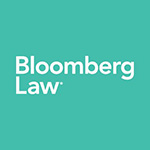Here are some of the most common forms:
- Spoofing: Spoofing involves placing large orders with no intention of executing them, to create a false impression of demand or supply. These fake orders manipulate the price of the security, allowing the spoofer to profit from the resulting price movements once other market participants react.
- Wash Trading: Wash trading occurs when an individual or entity simultaneously buys and sells the same security to create artificial trading volume. This misleading activity gives the illusion of heightened interest in a security, which can trick other investors into making decisions based on inaccurate information.
- Pump-and-Dump Schemes: In pump-and-dump schemes, fraudsters spread false or misleading information to artificially inflate the value of a stock (the “pump”), allowing them to sell their holdings at a profit (the “dump”). Once the price collapses, unsuspecting investors are left with significant losses.
- Front Running: Front running is the unethical practice of executing trades based on non-public knowledge of pending large transactions. Brokers or traders who have access to confidential information may take advantage by entering into trades before the large order is executed, profiting from the expected price movement.
- Layering: Layering involves placing multiple fake orders at different price levels to create a misleading impression of market interest. This manipulation influences other traders’ perceptions of supply and demand, resulting in price shifts that benefit the manipulator.
Regulatory Framework and Oversight
The regulatory framework for market manipulation and trading violations is built on several key U.S. laws and overseen by prominent regulatory bodies.
The Securities Exchange Act of 1934 and the Commodity Exchange Act are central to the regulation of trading practices, providing guidelines to ensure transparency and fairness in the financial markets.
These laws are enforced by regulatory authorities such as the Securities and Exchange Commission (SEC), the Commodity Futures Trading Commission (CFTC), and the Financial Industry Regulatory Authority (FINRA), each of which plays a crucial role in detecting and preventing market manipulation.
The SEC focuses on securities markets, while the CFTC regulates commodities and derivatives trading, and FINRA oversees broker-dealers to ensure compliance with established rules.
Anti-manipulation rules and policies, established by these regulatory bodies, are designed to prevent deceptive trading activities and maintain the integrity of financial markets by ensuring that all participants play by the same rules.
Identifying Market Manipulation
Identifying market manipulation is essential for maintaining a fair and transparent trading environment.
Below are key ways to detect manipulation:
- Red Flags: Watch for unusual price movements that lack an economic explanation, abnormal trading volumes, or sudden spikes in activity that do not align with market news. These are often indicators of manipulative practices.
- Surveillance Systems: Regulatory bodies use advanced monitoring systems to analyze market data and identify suspicious patterns. These systems track trading behaviors, flagging irregular activities that could signal manipulation.
- Whistleblower Contributions: Whistleblowers are crucial in identifying market manipulation. Individuals with inside knowledge can provide valuable information to regulators, helping to uncover manipulative practices and ensuring accountability.
At Dilendorf Law, we assist corporate insiders in addressing situations where they are asked to engage in unethical, unlawful, or questionable practices, or when they have concerns that their employer may be violating securities or other laws.
Consequences of Market Manipulation
Market manipulation carries serious repercussions. Legally, individuals found guilty face severe penalties, including hefty fines and potential imprisonment.
Financially, manipulative practices often result in substantial losses for investors misled by deceptive actions.
Beyond immediate financial impacts, such activities erode market confidence, discouraging investor participation and ultimately compromising the stability of financial markets.
Numerous court cases have examined these issues, offering valuable insights into the legal standards and evidentiary requirements for proving violations.
- In Set Capital LLC v. Credit Suisse Grp. AG, the 2nd Circuit Court of Appeals held that the district court erred in dismissing a market manipulation claim under § 10(b) of the Securities Exchange Act of 1934. The complaint plausibly alleged both motive and opportunity to commit a manipulative act, as well as strong circumstantial evidence of conscious misbehavior or recklessness Set Capital LLC v. Credit Suisse Grp. AG, 996 F.3d 64.
- In Choi v. Tower Research Capital LLC, the 2nd Circuit Court of Appeals affirmed the district court’s summary judgment in favor of a high-frequency trading firm. The court found that the trading of KOSPI 200 futures was regulated by the Korea Exchange and not subject to the rules of the Chicago Mercantile Exchange, thus not violating the Commodity Exchange Act Choi v. Tower Research Capital LLC, 2 F.4th 10.
- In ATSI Communs., Inc. v. Shaar Fund, Ltd., the 2nd Circuit Court of Appeals affirmed the dismissal of a market manipulation claim. The plaintiff’s allegations were deemed speculative and insufficient under Fed. R. Civ. P. 9(b) and the Private Securities Litigation Reform Act, as they failed to provide specific allegations of manipulative actions or adequately plead scienter ATSI Communs., Inc. v. Shaar Fund, Ltd., 493 F.3d 87.
- In United States CFTC v. Johnson, the Southern District of Texas found that the CFTC sufficiently stated claims of knowing delivery of false trade information to manipulate natural gas prices. The court held that the CFTC was not required to comply with the heightened pleading requirements of Fed. R. Civ. P. 9(b) for CEA claims United States CFTC v. Johnson, 408 F. Supp. 2d 259.
- In GFL Advantage Fund, Ltd. v. Colkitt, the 3rd Circuit Court of Appeals affirmed summary judgment in favor of the lender. The court found that substantial short selling of stocks, while lawful, did not constitute market manipulation under Section 10(b) and Rule 10b-5, as there was no evidence linking the short sales to the parties’ obligations under the convertible notes GFL Advantage Fund, Ltd. v. Colkitt, 272 F.3d 189.
- In Koch v. SEC, the D.C. Circuit Court of Appeals upheld the SEC’s finding that an investment adviser manipulated the market by marking the close. The court emphasized that intent to manipulate, rather than the success of the manipulation, is sufficient to prove a violation of the Exchange Act Koch v. SEC, 793 F.3d 147.
- In Oversock.com, Inc. v. Goldman Sachs & Co., the California Court of Appeal found that summary judgment was improper for a New York-headquartered securities firm on California market manipulation claims. The evidence raised a triable issue regarding the firm’s transactions in California for the purpose of inducing others to trade in the manipulated stock Overstock.com, Inc. v. Goldman Sachs & Co., 231 Cal. App. 4th 513.
- In Harry v. Total Gas & Power N. Am., Inc., the 2nd Circuit Court of Appeals dismissed claims under the Commodities Exchange Act due to insufficient allegations connecting the plaintiffs’ trading to the defendants’ manipulative actions. The court found that the plaintiffs failed to establish a plausible connection between their trading and the alleged manipulation Harry v. Total Gas & Power N. Am., Inc., 889 F.3d 104.
- In FERC v. Powhatan Energy Fund, LLC, the 4th Circuit Court of Appeals held that FERC’s civil action against financial traders for manipulating a wholesale electricity market was not time-barred. The court determined that the statute of limitations did not commence until FERC fulfilled each statutory prerequisite to filing suit FERC v. Powhatan Energy Fund, LLC, 949 F.3d 891.
- In SEC v. Wyly, the Southern District of New York ruled that the SEC could not approximate a disgorgement amount merely by proving violations and calculating total profits. The court found no evidence that the defendants’ unlawful conduct resulted in market distortion, price impact, or profit tied to the violation SEC v. Wyly, 56 F. Supp. 3d 260.
Whistleblower Awards
Whistleblowers may be eligible for an award when they voluntarily provide the SEC with original, timely, and credible information that leads to a successful enforcement action.
Whistleblower awards can range from 10% to 30% of the money collected when the monetary sanctions exceed $1 million.
Contact Us
Market manipulation undermines investor trust and the integrity of financial markets.
It is crucial to maintain transparency and fairness by holding wrongdoers accountable.
Our firm ensures that clients receive comprehensive support while maintaining full confidentiality to protect their interests at every stage.
If you have been affected by market manipulation or have information about trading violations, Dilendorf Law is here to provide legal support and guide you through the process.
We work with whistleblowers to bring their matters to the SEC, collaborating with a former prosecutor and securities enforcement attorney.
If we accept your case, our services are offered on a contingency basis, meaning you pay only if we succeed.
Contact Dilendorf Law Firm at (212) 457-9797 or via email info@dilendorf.com to learn more about how we can help protect your rights.










































